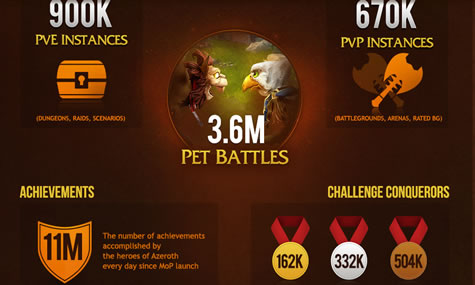University instructional design experts and seasoned gamers say playing games is essential for professional development
 There’s an old saying for writers that goes “Write what you know,” and now, it seems that current instructional practice is telling educators developing courses something similar: “Design what you know.”
There’s an old saying for writers that goes “Write what you know,” and now, it seems that current instructional practice is telling educators developing courses something similar: “Design what you know.”
Today’s course design is under incredible pressure from popular practices favored by students—practices like the inclusion of interactive mobile technology, blended learning, Flipped Learning, and the integration of peer community forums—and according to experts, understanding the reasons why students prefer these methods of instruction can be gleaned from taking part in gaming.
“We do games so that we can relate better to our students,” said Kae Novak, chair for ISTE’s SIG Virtual Environments and project lead instructional designer for student engagement and assessment at Front Range Community College. “Students constantly tell us that they wish classes were more like games, so knowing the parts of gaming that can be incorporated into learning helps to change our knowledge structure.”
Game for PD helps to teach educators new ways of incorporating characteristics of learning like persistence, problem solving, online collaboration, group dynamics, and social responsibility, she continued.
(Next page: Breaking down game elements for design)
According to Novak, there are three main elements of gaming; elements that should also be applied to 21st Century course design:
1. Fun: Based on Nicole Lazzaro’s research in gaming, there are four specific kinds of ‘fun’ in gaming, or the Player Experience (PX), and this is how the player creates emotion. There’s Hard Fun (opportunity for challenge, mastery, and feelings of accomplishment due to goals, constraints and strategy); Easy Fun (inspires exploration and role play through imagination); People Fun (building social bonds and team work); and Serious Fun (purposeful play that changes how players think, feel, behave, or make a difference in the real world). See the Fun chart here.
2. Flow: Otherwise known as the psychology of Optimal Experience, which Novak describes as “being in the zone, or knowing that you’re doing well and will continue to do well; it’s almost losing yourself in the experience.”
3. Fiero: Linked to Hard Fun, Fiero is a gaming psychology term used to describe the feeling of pleasure a gamer receives after a job well-done.
Novak related how Fun, Flow & Fiero can be incorporated into course design.
“A good course always has elements of all three,” she said. “With fun, it’s important to try and strike a balance for today’s students between Hard Fun, People Fun and Serious Fun. Flow is also important because students need to be able to feel like the coursework can be accomplished and eventually mastered. Fiero should try to be incorporated as much as possible by clearly defining course-objectives and making accomplishments visibly tangible to students.”
Of course, Novak notes that though these elements are great on paper, it’s only after playing games that incorporate different types of fun that a deep understanding will occur.
Easy Fun games include games like FrontierVille on Facebook or Sims; Hard Fun is usually any single-player game not set on the ‘easy’ mode; People Fun is a multiplayer game like World of Warcraft or Second Life; and Serious Fun can be anything from online math and science games and brain trainers to city engineering games, she noted.
(Next page: Once inside the game…)
Chris Luchs, associate dean for career technical education at the Colorado Community College System, says it’s just as important for educators to know the different kinds of game design as the kinds of fun.
Designs can include:
Sandbox Genre: allows users to drive what they want to do, such as create and control the environment. There’s no existing structure or storyline and the action occurs because of the player. Examples include Minecraft and Civilization.
Educators can design projects within a course, or whole courses, that focus on student creation. For example, leading topics covered within a subject based on student questions and interest and designing “maker” homework to go along with it.
MMO/MMORPG: These Massive Multiplayer Online Role-Playing Games are ones that incorporate the People Fun element, and it’s these groups that dictate the action in a game. World of Warcraft is one example, and can better help instructional designers understand how to develop group-based learning projects.
Quests: This design, what could be considered most traditional in terms of course design, has structure and scaffolding that goes behind a target end-goal. It’s important to note that during these quests, multiple “achievements” can be unlocked by the player and there are usually chances to go above and beyond normal play to unlock secret achievements (think: extra credit and alternative credentialing through digital badges).
“How do you create quests and make them fun?” asked Luchs. “This is a question every educator needs to consider when building their lesson.”
An example of the ‘badges’ awarded to players in World of Warcraft (click here for the full infographic):
Raids: This type of design, believe it or not, is currently valued by Fortune 500 companies. Raids challenge gamers to come up with strategies to solve problems in the shortest amount of time possible.
John Seely Brown, independent co-chairman of the Deloitte Center for the Edge and adviser to the provost and visiting scholar at the University of Southern California famously said that due to the nature of raids and online gaming in general, high-level players of World of Warcraft make better employees than those who have an MBA from Harvard. Read the full article and Brown’s reasoning here.
Virtual Online Communities: Behind most game design is the basic platform of an online community, capable of group text/chat and verbal communication with headsets.
“There’s a while online community behind all games, and these are integral to most mastery,” said Luchs. “You have back-channel discussion boards, wiki pages, YouTube videos and tutorials, and even Flickr guides. Educators should see this wealth of online resources as the same that should be available to your course. Integrate online forums and chats, create those Flipped videos, provide access to links in Syllabi, et cetera.”
“Creating a quest/game is like creating a course,” concluded Luchs. “Performance optimization is critical but you have a variety of choices in how you create the best optimization for your students and your subject. Do you want to increase Mana (intellect)? Increase overall mastery? Lower the hit rating to increase mastery? Lower the critical strike rate to increase intellect? Play some games and find out!”
- 25 education trends for 2018 - January 1, 2018
- IT #1: 6 essential technologies on the higher ed horizon - December 27, 2017
- #3: 3 big ways today’s college students are different from just a decade ago - December 27, 2017


